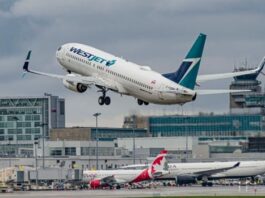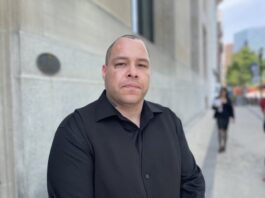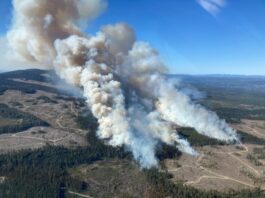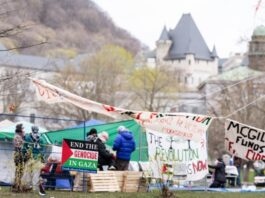
This story is part of the Black on the Prairies project, a collection of articles, personal essays, images and more, exploring the past, present and future of Black life in Alberta, Saskatchewan and Manitoba. Enter the Black On The Prairies project here.

Nearly 175,000 people identified as Black on the Prairies during Canada’s 2016 census.
Like all data, this figure may not say much on its own. It is limited to the number of respondents who specifically identified as “Black.” Also, a lot could have changed in the five years since the last census was conducted.
However, when put in context, a closer look at the statistics reveals stories about a rapidly growing Black population with deep roots in the region and branches stretching across the Black diaspora.
Below are 10 graphics that illustrate where Black people on the Prairies live, how long they’ve been here, where they were born, the languages they speak and the religions they practice.
About 1 in 7 Black people in Canada live on the Prairies
In 2016, more than 1.2 million people in Canada identified as Black. This means that, with a Black population of about 175,000, the Prairie provinces were home to 14.6 per cent of the country’s Black population.
The vast majority (129,390) were in Alberta, followed by Manitoba (30,340) and Saskatchewan (14,925).
The Prairies has the fastest-growing Black population in Canada
While the Prairies trail Ontario and Quebec in overall size of Black population, the region tops the country in terms of the Black population growth rate for the period of 1996 to 2006.
The growth rate has increased from census to census, and is mainly attributed to more recent waves of immigration from African countries, according to Statistics Canada.
Alberta’s Black population, in particular, has been growing exponentially. In 1996, the province’s Black population stood at slightly less than 25,000. By 2016, the Black population had grown fivefold to nearly 130,000.
Manitoba and Saskatchewan saw their Black populations triple from 1996 to 2016. They have the country’s third and fourth highest Black population growth rates, respectively, ranking lower than only Alberta and the Territories.
Most Black people are 1st generation, but some have very deep roots in the region
About two-thirds of Black people on the Prairies are first generation, with many arriving from the African continent, but Black presence on the Prairies is believed to stretch back as far as the 18th century.
The first significant wave of Black migration occurred from 1905 to 1911, when homesteaders from Oklahoma, Texas and other Southern states made the trip north to establish settlements in Saskatchewan and Alberta. That migration was quickly stifled by anti-Black governments that thwarted, and later banned, Black migration.
Changes to Canada’s immigration system in the 1960s spurred a second major wave of Black migration, resulting in Black immigrants arriving from the Caribbean, Africa and the Americas.
Most Black people on the Prairies were born in Canada
The recurring trope that Black people are new or alien to the region is explored throughout the Black on the Prairies project. Yet, on top of the long history on the Prairies as seen above, more than a third of all Black people in the region were born in Canada.
Rounding out the top five places of birth for the Black population on the Prairies are Nigeria, Ethiopia, Jamaica and Somalia, reflecting more recent waves of migration from Africa and the Caribbean.
A small Albertan city has the largest concentration of Black residents on the Prairies
Several municipalities on the Prairies have a higher concentration of Black residents than the Canadian average (3.5 per cent).
Some are located in the region’s largest cities: Calgary, Edmonton and Winnipeg (Regina comes in below the national average at 2.2 per cent).
However, the title of the municipality with the largest percentage of Black residents on the Prairies goes to Brooks, Alta. This is likely due to many immigrants and refugees from sub-Saharan Africa working in the small southern Alberta community’s meat-packing industry. In 2016, nearly 14 per cent of residents in Brooks identified as Black.
Some neighbourhoods have had a strong Black presence for more than a century

At the census tract level, the data shows several neighbourhoods on the Prairies that could be considered Black enclaves.
Winnipeg’s Central Park neighborhood is home to Manitoba’s largest concentration of Black residents. About 28 per cent of its residents identified as Black in 2016, more than seven times the percentage of Black people in the city at large (3.9 per cent). The area is home to a large African population, which is reflected in the neighbourhood’s African stores, summer markets and cultural events.
Queen Mary Park and Central McDougall, located just outside Edmonton’s downtown core, are also home to sizable Black populations. Queen Mary Park, in particular, has historical significance as the home of the Shiloh Baptist Church. Formed in 1910, the church became a community hub for African-American migrants who were turned away from the city’s other churches. It remains a Black institution to this day.
The census tract with the highest concentration of Black residents in Calgary includes part of the Radisson Heights neighborhood (16 per cent). In Regina, it was a census tract located in the western half of Arcola East-North Side and the northeastern tip of Al Ritchie (eight per cent).
Black people on the Prairies mostly identify as Christian and Muslim
When it comes to faith, Black people on the Prairies are overwhelmingly Christian (70 per cent on average across the three provinces), slightly above the Canadian average (67.3 per cent). Muslims and those with other religious affiliations make up much of the rest.
This picture may be quite outdated, however, as Statistics Canada has not collected data on religious affiliation since 2011. In Canada at large, for example, Islam is the fastest-growing religion and some Black immigrants in the Prairies are from majority-Muslim countries like Somalia.
The 2021 census will once again include a question about religion, with additional questions designed to elicit more detailed responses, so it may paint a different picture than the one above.
Somali is the most spoken non-official language in Black homes on the Prairies
Most Black people on the Prairies speak English at home, with a growing number speaking French, according to Statistics Canada.
Aside from official languages, the most spoken language in the home was Somali, followed by Amharic, Tigrinya, and Oromo — a reflection of the region’s large Somali, Ethiopian and Eritrean communities.
This may not be a full picture of the languages spoken at home by Black people on the Prairies, however. Take Yoruba and Igbo. Nigerians make up the largest African diaspora community on the Prairies, yet Yoruba and Igbo barely make the top 10, even when combined. This may be because respondents indicate that English is the most spoken language in the home without including other non-official languages.
The Black on the Prairies project is supported by Being Black in Canada. For more stories about the experiences of Black Canadians, check out Being Black in Canada here.













